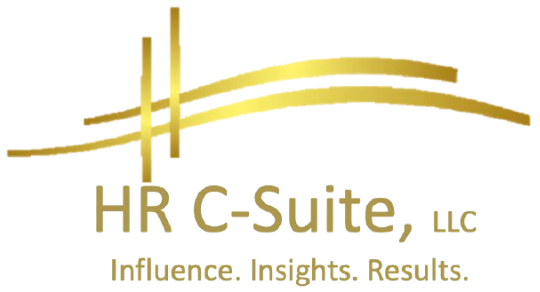In the modern workplace, meetings have long been a double-edged sword—essential for collaboration yet often a drain on time and energy. Bloated agendas, endless tangents, and overstuffed calendars have turned meetings into a productivity sinkhole, with employees spending an average of 15 hours a week in them, half deemed unnecessary, according to industry research. Enter the meeting makeover: a shift to ultra-short, high-impact 15-minute huddles that are redefining how teams connect, decide, and thrive. These laser-focused gatherings are gaining traction, offering a antidote to meeting fatigue and unlocking new levels of productivity and engagement.
For executives and HR leaders, embracing 15-minute huddles isn’t just a scheduling tweak—it’s a strategic pivot to align with the fast-paced, hybrid, and distraction-heavy realities of work. Research from McKinsey shows that streamlined meetings can boost productivity by 20% and engagement by 15%, as teams reclaim time for deep work and feel more valued. This evergreen article explores why 15-minute huddles are winning, the pitfalls of traditional meetings, and a practical playbook for leadership and HR to implement them, transforming meetings from time-wasters to catalysts for success.
The Problem with Traditional Meetings
Traditional meetings are often a relic of a slower era, plagued by inefficiencies:
- Time Bloat: Hour-long meetings, scheduled by default, drag on with preamble or tangents. Studies estimate 30% of meeting time is wasted on non-essential discussion.
- Overcrowding: Inviting everyone “just in case” dilutes focus. Research from Harvard Business Review finds that meetings with over seven attendees are 25% less effective.
- Lack of Purpose: Vague agendas—“team sync”—lead to meandering talks. A SHRM survey notes 40% of employees leave meetings unclear on next steps.
- Meeting Fatigue: Back-to-back calls, especially in hybrid setups, exhaust teams. A Gallup study reports 55% of workers feel “Zoom fatigue,” harming morale.
- Opportunity Cost: Time in meetings steals from strategic or creative work. McKinsey calculates that professionals lose 20 hours monthly to low-value gatherings.
These issues hit hard in a workplace defined by speed and agility. Employees juggle global teams, digital noise, and high expectations, leaving little patience for hour-long debates. The result? Disengagement, burnout, and missed opportunities to drive results.
Why 15-Minute Huddles Win
The 15-minute huddle—short, focused, and action-oriented—is a game-changer for several reasons:
- Maximized Focus: A tight timeframe forces clarity. Teams stick to priorities, cutting fluff. Research shows 15-minute meetings increase decision speed by 30%.
- Respect for Time: Brief huddles signal value for employees’ schedules, boosting morale. A Deloitte study found 60% of workers feel more engaged when meetings are concise.
- Action-Oriented: Huddles prioritize outcomes—decisions, assignments—over discussion. A BCG report notes 25% higher action-item completion in short meetings.
- Hybrid-Friendly: Virtual or hybrid teams benefit from quick check-ins, reducing Zoom fatigue. A Pew survey shows 50% of remote workers prefer brief syncs.
- Scalable Agility: Huddles fit fast-moving environments, enabling rapid alignment. A McKinsey case found teams using daily huddles adapted 20% faster to market shifts.
These benefits make huddles a cornerstone of modern work, aligning with a workforce that craves efficiency and purpose.
The Pitfalls to Avoid
Huddles aren’t a cure-all—poor execution can undermine them. Common mistakes include:
- Lack of Structure: Without clear agendas, huddles become mini-marathons.
- Overuse: Too many huddles clog calendars, negating time savings.
- Exclusion: Skipping key players risks misalignment or resentment.
- Tech Glitches: Hybrid huddles falter with bad connections or tools.
- No Follow-Through: Failing to track action items stalls momentum.
HR and leadership must design huddles with discipline to unlock their potential.
A Playbook for Implementing 15-Minute Huddles
Executives and HR can drive the meeting makeover with a strategic approach to embed 15-minute huddles effectively. Here’s a roadmap:
- Set a Huddle-First Culture
Champion brevity as a value. Declare 15-minute huddles the default, reserving longer meetings for complex strategy. Communicate the “why”: more time for work, less for talk. A case study showed a firm boosting engagement 18% by branding huddles as “time savers.” HR should weave this into onboarding and leadership training, making brevity a cultural norm. - Define Clear Huddle Types
Not all huddles are equal—categorize them: daily stand-ups (progress updates), decision huddles (quick calls), or brainstorming bursts (idea generation). Set rules: stand-ups cover “what’s done, what’s next”; decisions need pre-reads. A SHRM case found typed huddles cut confusion 25%. Clarity ensures focus. - Craft Ironclad Agendas
Every huddle needs a tight agenda—three points max, shared upfront. Example: “Approve budget, assign tasks, set deadline.” Timebox each: 5 minutes per topic. A HBR study found agendas boost action outcomes 30%. HR should train leaders to write crisp agendas and stick to them, avoiding derailment. - Invite Only Essential Players
Keep huddles lean—five to seven attendees max. Include decision-makers and doers; others get updates async. Use RACI (Responsible, Accountable, Consulted, Informed) to clarify roles. A BCG case saw lean huddles save 10 hours weekly per team. HR can audit invites to enforce discipline. - Leverage Async Pre-Work
Offload background to before the huddle—share docs, videos, or Slack updates. Require pre-reading; no recaps in-session. A Deloitte study found async prep cuts meeting time 20%. HR should provide templates—bullet-point briefs—and train teams to use them, freeing huddles for decisions. - Master Hybrid Execution
Hybrid huddles need tech and etiquette. Use reliable platforms—Zoom, Teams—with backup mics and cameras. Start with a 1-minute roll-call to sync. Ensure remote voices are heard—call on them first. A Pew case found hybrid huddles with clear protocols boosted inclusion 15%. HR should test tech and train facilitators. - End with Action Items
Every huddle must yield clear next steps—who does what, by when. Assign owners and deadlines: “Sarah, draft plan by Friday.” Log tasks in tools like Asana or Trello. A McKinsey case saw action completion rise 25% with tracked outputs. HR should monitor follow-through, ensuring accountability. - Train Leaders to Facilitate
Huddles demand skilled moderators—train managers to keep time, curb tangents, and draw out quiet voices. Use techniques like “round-robin” updates to ensure equity. A SHRM program lifted facilitator confidence 40%, cutting overrun 20%. HR should offer monthly coaching to sharpen skills. - Measure and Optimize
Track huddle impact—survey employees: Are meetings shorter, clearer? Monitor productivity, engagement, and task completion. Use analytics—Microsoft Viva—to spot bloat. A BCG case refined huddles after data showed 15% were too frequent. HR should iterate quarterly, balancing cadence and impact. - Celebrate Huddle Wins
Reward teams who nail huddles—public praise, “efficiency awards.” Share success stories: “Team X cut meetings 50%, hit goals early.” A Gallup case found recognition boosted adoption 30%. HR should tie huddle mastery to performance reviews, embedding it in culture.
Overcoming Challenges
Resistance is common. If leaders cling to long meetings, pilot huddles in one team to prove results. If employees fear exclusion, clarify async updates keep everyone looped in. Budget tight? Use free tools like Google Meet. Skeptical execs? Show ROI—20% productivity gains, per McKinsey. Small wins build buy-in.
Wrapping it up
The 15-minute huddle makeover delivers transformative results. Productivity soars—teams reclaim hours for deep work, hitting goals 20% faster, per Deloitte research. Engagement rises as valued time boosts morale, cutting turnover 15%, per Gallup. Innovation thrives with focused collaboration, sparking 18% more ideas, per BCG. And HR solidifies its strategic role, driving a culture of efficiency. A case study saw a tech firm launch a product 25% faster after adopting huddles, proving their power.
Meetings don’t have to be a drag. By embracing 15-minute huddles, executives and HR can transform them into high-impact catalysts, aligning teams, saving time, and unlocking the full potential of the modern workplace.

